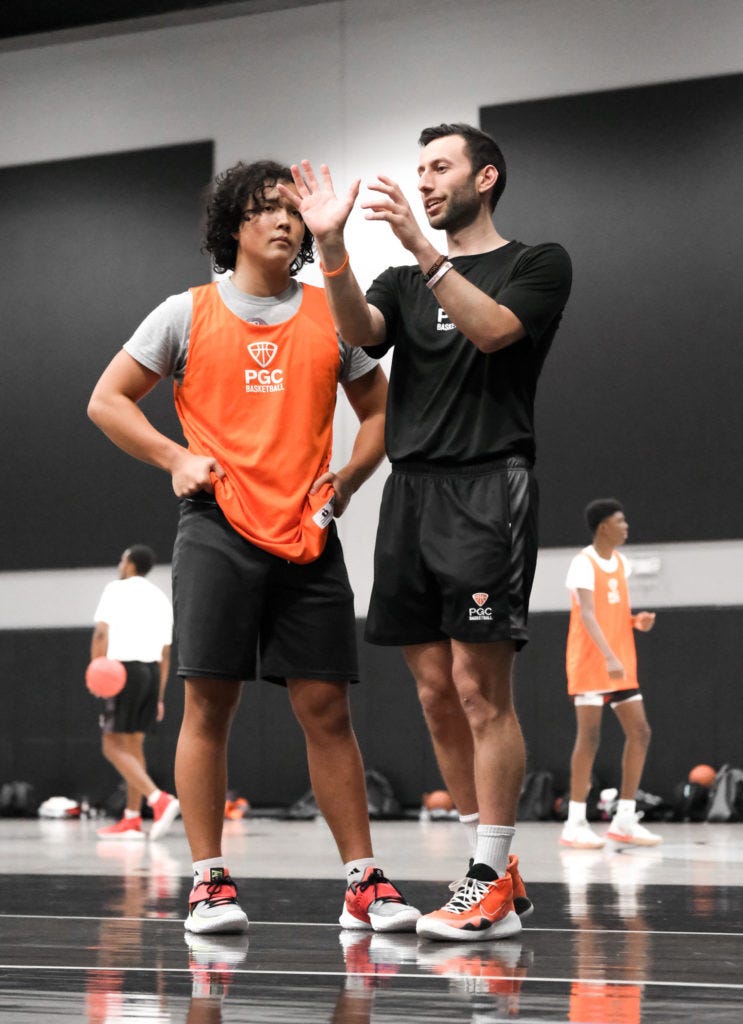Stop wasting timeouts in pickleball tournaments. Do this instead...
Jul 14, 2022Have you ever finished a tournament match and been frustrated?
You went back to the hangout area, put your paddle down, and just sat there —annoyed.
“Why didn’t I do that? Why didn’t we adjust this?”
If you’ve experienced this before, you’re not alone.
If you play the game long enough and eventually play in tournaments, this feeling is inevitable.
Now, before I offer a possible solution, welcome back to another edition. Glad your here!
As you know, I’m on a mission to become a pickleball pro, but in recent weeks, I haven’t been able to train as much or play in as many tournaments because I actually lead a double life.
**chuckles**
In my other life, I’m a basketball guy. For the past 5 years, I’ve led summer basketball camps for dedicated players across the country.

And at these camps, we teach players how to think the game differently and learn nuances most never talk about.
My experience teaching at these camps has shaped my mindset to now become fascinated by all the “little things” in pickleball.
Which brings us back to today’s topic.
How to effectively use timeouts in a tournament game.
In my view, too many players use them poorly.
You’ve seen the scenario. One team goes on a run and the opponent gets pissed, aggressively drops their paddle on the ground, and walks over to the bench — only to pout and avoid any conversation or strategy talk with their partner.
Now, let me be clear. I don’t think it’s wrong to call a timeout to stop a run. I think that’s one way to approach it. But the thing is, that’s the only way most approach it, and it’s definitely not the only way there is.
See, in my last two tournaments, I tried something different. I was playing with a new partner against opponents I’d never seen play before.
Which are two keys to remember.
-
New partner
-
New opponents.
And if you ever have even one of these in a game situation,
…then what I’m about to share with you just might become your go-to strategy to adjust faster and win more.
Here it is…
After the first 6-8 points of each match, we’d call a timeout. Now, if we’re up 7-0, we’re not calling timeout. We keep the streak going.
But when it’s 4-3, or 2-4, or maybe we got stuck on a number for awhile because we struggled to score on our serve, then we call an early timeout
And it’s not to rest and it’s not because we’re angry. But it’s to talk for a moment about two things.
-
What we both see and
-
How we might adjust.
Because here’s the thing.
I realized after games, I’d be sitting there thinking about the match wondering, why didn’t we go to “that strategy that worked” 10 minutes earlier?
And the truth is, because it’s difficult to focus on your shots, be a good teammate, keep the score, and recognize how the other team is playing so you can exploit weaknesses.
So, the early timeout gives you time to breathe. It gives you time to think. It gives you time to process what just took place in the first few points of the match.
And after processing, you can make smarter adjustments to redirect focus or extend the lead.
In my last tournament, this worked wonders.
Especially because, again, I was playing with a (1) new partner against (2) opponents I knew nothing about.
(Remember, two indicators of when to use this strategy.)
And listen, I still believe using a timeout to stop a run is valuable. But don’t use the entire time to be pissed. Use the first few seconds for that, then shift your mind to what’s next!
If you do that, you’ll give your team an edge and change the direction of matches in ways you never thought possible.
Because isn’t that what we’re all striving for in tournament play? Or shoot, even rec play.
We want to get skilled enough to see paint points and adjust in the moment. To see weaknesses we can exploit. And to identify opportunities we can take advantage of.
Because when we do that…
…we turn our post-match frustration into post-match celebration.
And that, my friends, is something to strive for.
Until next time,
Kyle
PS: If someone sent you this article or you found it from social media and want more like it — subscribe to my weekly newsletter where I share…
-
tips to improve
-
interesting pickleball stories
-
entertaining pickleball videos
-
and a little about my journey from never playing to pro pickleball in 12 months!
